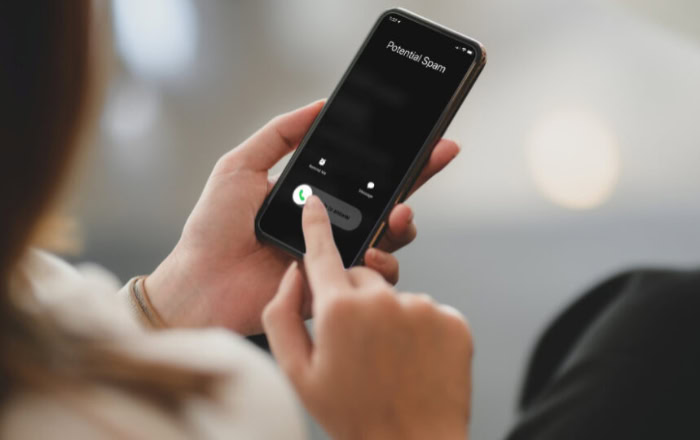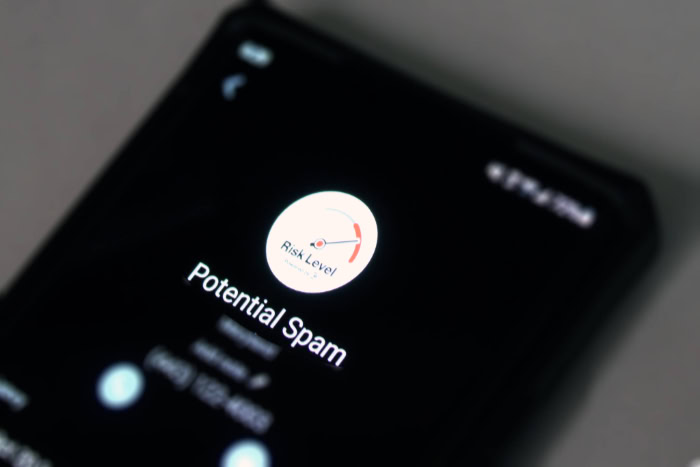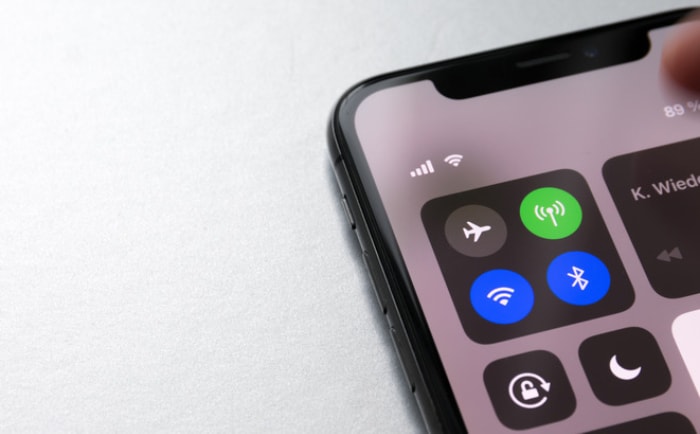What Are “Potential Spam” Calls? Cut Through the Confusion

Phones lighting up with calls labeled “Potential Spam” can leave anyone frustrated or uneasy. These alerts are more than just an annoyance; they signal real risks to your privacy, security, and even your wallet.
Clever scammers exploit gaps in technology and human trust, while businesses struggle to reach genuine customers without being mistaken for frauds. Recognizing how and why spam calls are flagged has never been more important for protecting yourself and those around you.
Understanding “Potential Spam” Calls
Receiving a phone call labeled as “Potential Spam” can cause confusion or concern, especially when you are unsure if the caller is legitimate. Modern phone carriers have introduced these alerts as part of their effort to combat unwanted and potentially harmful communications.
The labels are designed to help users quickly identify calls that may be associated with scams, telemarketers, or robocalls. However, not every flagged call poses a threat, and knowing how carriers identify and categorize such calls can help you better interpret these warnings when they appear.
Core Definitions
Major carriers like Verizon, AT&T, and T-Mobile have each developed their own systems for warning customers about possible spam. For example, Verizon might display “Potential Spam” on your screen, while T-Mobile uses the label “Scam Likely.”
These alerts rely on databases and screening technologies to assess the reputation of incoming numbers.
Detection algorithms sift through billions of calls by analyzing patterns that suggest suspicious behavior. Calls that rapidly dial thousands of numbers in a short time frame, use numbers that have been reported for sending spam, or employ tactics like caller ID spoofing are often flagged.
Additionally, when users report certain numbers as spam or scam, carriers update their systems to recognize and warn about future calls from those sources. The process combines technology and crowd-sourced feedback to improve accuracy, but it is not foolproof and sometimes legitimate calls are caught in the net.
Key Characteristics
Several common triggers prompt a carrier to label a call as potential spam. Calls originating from numbers with unverified or suspicious caller ID information raise immediate red flags.
High-volume dialing patterns, where the same number attempts to reach large numbers of recipients in a short period, often match the behavior of robocallers and scammers.
Many flagged calls impersonate trusted organizations, such as banks, government offices, or utility companies, with the intent to trick recipients into sharing sensitive information or making fraudulent payments. Others may attempt to sell products or services through aggressive telemarketing tactics.
While caller reputation and previous reports play a significant role, the actual content or intent of the call is not always assessed by the system, which can lead to both correct alerts and occasional false alarms. Recognizing the signals that cause a “Potential Spam” warning can help you remain cautious and respond wisely when picking up the phone.
Risks and Threats

The rise of “Potential Spam” calls brings a mix of personal and professional concerns. For individuals, picking up the wrong call can lead to serious financial or privacy consequences.
For organizations, call mislabeling can threaten customer relationships and business efficiency. Recognizing the wide-reaching effects of unwanted and mislabeled calls helps highlight why both individuals and businesses should pay close attention to this issue.
Financial and Identity Risks
Answering a call marked as “Potential Spam” can expose unsuspecting individuals to a variety of scams. Sophisticated scammers often use caller ID spoofing to make their calls appear to come from trusted companies, financial institutions, or even government agencies.
During these calls, victims may be pressured to provide personal information, such as bank account details, credit card numbers, or social security numbers.
Phishing attempts remain a constant threat. Callers may pose as support staff or claim urgent problems with your accounts to extract sensitive information.
In some cases, simply answering and engaging with a scammer can result in unauthorized charges or unwanted subscription services. Social engineering tactics are used to manipulate emotions and prompt hurried decisions, increasing the risk of identity theft or financial loss.
The impacts of such incidents can linger, affecting credit scores and personal security long after the call ends.
Operational Challenges
Mistakenly labeling legitimate business calls as spam presents a real challenge for organizations. When a company’s outgoing calls are flagged, customers may grow suspicious or ignore important communication altogether.
This mistrust can disrupt service delivery, interfere with appointment reminders, or delay responses to time-sensitive issues.
Overly aggressive call-filtering systems occasionally block reputable telemarketers, customer service representatives, or research surveyors. This leads to “false positives,” where genuine calls are caught in the same net as fraudulent ones.
Such situations can frustrate both callers and recipients, making it harder for businesses to connect with their audience. For companies that rely on phone outreach, protecting caller reputation and ensuring clear communication channels becomes essential for maintaining operations and customer confidence.
Mitigation Strategies

Protecting yourself from “Potential Spam” calls involves a combination of carrier features, smartphone settings, and external apps. Both individuals and organizations can lower their risk of falling victim to spam or missing important calls by taking proactive steps.
Today’s tools offer practical options for blocking, filtering, and reporting unwanted calls, putting more control in the hands of everyday users.
Carrier-Specific Solutions
Major mobile carriers have responded to the surge in unwanted calls by offering dedicated blocking and filtering services. Verizon Call Filter, AT&T Active Armor, and T-Mobile Scam Shield each provide layers of protection, from automatic spam identification to customizable block lists.
Users can choose to silence suspicious calls or send them directly to voicemail, reducing interruptions and exposure to scams.
Smartphones themselves have joined the effort with features like Silence Unknown Callers on iOS and Filter Spam Calls on Android devices. Settings can be adjusted to prevent unidentified or suspicious numbers from ringing through, making it easier to maintain peace of mind.
Adjusting these features requires only a few taps, and most can be tailored to personal preferences, offering a balance between accessibility and security.
Third-Party Tools
App developers have also stepped in, creating sophisticated software to further combat spam. RoboKiller automatically blocks suspicious and robocallers, often incorporating voice response technology to tie up scam callers.
Truecaller uses a global, crowdsourced database to identify and filter calls based on reports from millions of users worldwide. Such apps not only warn about potential scams but also give users the ability to report bad actors, strengthening the process for others.
Enrolling your number in the National Do Not Call Registry can provide another layer of protection. While it does not eliminate spam entirely, it can significantly reduce calls from legitimate telemarketers required to honor the list.
Each strategy adds an additional barrier between you and unwanted callers, helping you regain control over your phone and personal privacy.
Business-Specific Challenges

Businesses that rely on outbound calling face unique obstacles in the fight against spam call labeling. Calls flagged as spam can interrupt important communications, hinder customer relationships, and impact brand reputation.
Companies must take extra steps to avoid misclassification and to ensure their numbers remain trusted by both carriers and customers.
Preventing Mislabeling
Adopting smart dialing practices serves as the first line of defense for organizations. Number rotation helps spread outgoing calls across multiple lines, reducing the likelihood that any single number will be flagged for high-volume activity.
Consistent use of the same number for mass calling can raise alarms with carrier algorithms, often resulting in a “Potential Spam” label that discourages recipients from answering.
Monitoring caller ID reputation is equally important. Businesses can track their numbers using reputation monitoring services and watch for negative trends, such as an uptick in calls being labeled as spam or blocked.
Quick action at the first sign of trouble, such as pausing campaigns or adjusting contact strategies, can prevent escalation. Focusing on regular audits and feedback ensures numbers remain in good standing and customer trust is preserved.
Best Practices
Building genuine relationships with customers starts with reaching out to those who have shown prior interest. Prioritizing warm leads, which means focusing on people who have already engaged with your brand, improves call answer rates and reduces the risk of being flagged as spam.
Cold calling en masse often triggers the very filters businesses hope to avoid.
Proper staff training is fundamental for ethical calling practices. Employees should understand the importance of respectful, transparent communication and know how to respond if a recipient expresses concern about call legitimacy.
Encouraging a culture that values customer privacy and clarity helps ensure outbound calls are welcome, not resented. Adopting these best practices can make the difference between being seen as a trusted caller or a potential nuisance.
Proactive Protection Measures

Staying ahead of phone scams requires a mixture of good habits and smart use of technology. With the number of spam calls on the rise, both individuals and businesses need to take action to safeguard their personal information and educate others within their networks.
Small changes in behavior, along with a few digital tools, can greatly reduce the risks associated with unwanted calls.
Security Practices
Maintaining strict data safeguards is essential when handling unsolicited phone calls. Never share sensitive information such as Social Security numbers, banking details, or passwords with any caller, regardless of who they claim to be.
Scammers are skilled at creating urgency or posing as authority figures to prompt rash decisions, so remaining calm and cautious always pays off.
Leveraging technology further enhances your protection. Using a virtual private network (VPN) keeps your online activities private, making it more difficult for malicious actors to gain information about you.
Identity theft protection services like Guardio or LifeLock can monitor your personal data and alert you to suspicious activity, adding another layer of defense should your details ever fall into the wrong hands.
Public Awareness
Widespread education remains a powerful tool in the fight against spam and scam calls. Teaching people how to spot spoofed phone numbers, such as those that appear similar to local businesses or government agencies, empowers them to recognize suspicious activity before they become victims.
Encourage family, friends, and colleagues to verify any unexpected calls by independently contacting the organization through an official number.
Reporting unwanted calls to your carrier or to the Federal Trade Commission (FTC) helps strengthen collective defenses. Every report assists service providers and government agencies in tracking patterns and shutting down sources of fraudulent activity.
Building a culture of awareness and proactive action protects not just individuals, but the larger community as well.
Conclusion
Vigilance has become essential in the effort to combat spam calls and protect both personal and organizational interests. Recognizing the risks, utilizing available tools, and adopting smart habits all contribute to a safer phone experience.
However, it is equally important to ensure that protective measures do not unintentionally block legitimate connections, especially those you rely on for vital information or business operations. Maintaining a balance between strong defenses and open communication channels benefits everyone, allowing technology to serve as both a shield and a bridge in daily interactions.
With awareness and the right strategies, you can enjoy greater peace of mind and confidence every time your phone rings.

